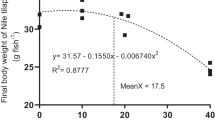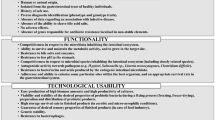Abstract
The objective of our studies was to investigate effects of carnosic acid (CA), selenized yeast (SeY) and selenate (SeVI) added to the diet including rapeseed oil (RO) and fish oil (FO) on concentrations of elements, fatty acids (FAs), tocopherols, cholesterol, and malondialdehyde in the liver, heart, musculus longissimus dorsi (MLD), and musculus biceps femoris (MBF) of lambs. Lambs were fed diets: group I—the basal diet (BD) with RO; group II—BD with RO and FO; group III—BD with RO, FO, and CA; group IV—BD with RO, FO, CA, and SeY; group V—BD with RO, FO, CA, and SeVI. The diets with Se compounds increased Se concentrations in all tissues compared with other diets. The diet with SeVI increased Cd, Sb, and Pb concentrations in the liver compared to groups I, II, and IV. The diets containing Se compounds increased Sb and Pb concentrations in MBF compared to groups I and II. All diets with CA reduced As, Sb, and Pb concentrations in MLD compared to groups I and II. All diets with FO increased concentrations of FAs and malondialdehyde in the liver compared to group I. All diets with FO decreased FAs concentrations in MBF compared to group I. The diets containing CA with/without Se compounds increased malondialdehyde concentrations in MBF compared to groups I and II. The diet with Se compounds reduced malondialdehyde concentrations in MLD compared to group II. All diets with FO changed concentrations of tocopherols and cholesterol in all tissues compared to group I. Our study showed that the addition of SeY or SeVI to the experimental diet increased the concentration of Se in all assayed tissues of lambs without adversely influencing performance or causing physiological disorders in internal organs. Both, SeY or SeVI added to the experimental diet decreased the oxidative stress and the concentrations of As, Sb, and Pb in MLD compared with the diets containing RO, irrespective of the presence of FO (groups I and II). Our study provides useful knowledge for nutritionists carrying out further investigations aimed at improving farm animal health, performance, and the nutritional quality of animal products for humans.
Similar content being viewed by others
References
Raymond LJ, Deth RC, Ralston NVC (2014) Potential role of selenoenzymes and antioxidant metabolism in relation to autism etiology and pathology. Autism Res Treat ID 164938:1–15
Rayman MP (2008) Food-chain selenium and human health: emphasis on intake. Brit J Nutr 100(02):254–268. https://doi.org/10.1017/S0007114508939830
Mainville AM, Odongo NE, Bettger WJ, McBride BW, Osborne VR (2009) Selenium uptake by ruminal micro-organisms from organic and inorganic sources in dairy cows. Can J Anim Sci 89(1):105–110. https://doi.org/10.4141/CJAS08031
Galbraith ML, Vorachek WR, Estill CT, Whanger PD, Bobe G, Davis TZ, Hall JA (2015) Rumen micro-organisms decrease bioavailability of inorganic selenium supplements. Biol Trace Elem Res 171(2):338–343. link.springer.com/article/10.1007/s12011-015-0560-8
Navarro-Alarcon M, Cabrera-Vique C (2008) Selenium in food and the human body: a review. Sci Total Environ 400(1-3):115–141. https://doi.org/10.1016/j.scitotenv.2008.06.024
Tapiero H, Townsend DM, Tew KD (2003) The antioxidant role of selenium and seleno-compounds. Biomed Pharmacother 57(3-4):134–144. https://www.ncbi.nlm.nih.gov/pubmed/12818475. https://doi.org/10.1016/S0753-3322(03)00035-0
Schweizer U, Streckfub F, Pelt P, Carlson BA, Hatfield DL, Köhrle J, Schomburg L (2005) Hepatically derived selenoprotein P is a key factor to kidney but not for brain selenium supply. Biochem J 386:221–226. www.biochemj.org/content/ppbiochemj/386/2/221.full.pdf. https://doi.org/10.1042/BJ20041973
El-Ramady H, Abdalla N, Alshaal T, Domokos-Szabolcsy É, Elhawat N, Prokisch J, Sztrik A, Fári M, El- Marsafawy S, Shams MS (2015) Selenium in soils under climate change, implication for human health. A review. Environ Chem Lett 13(1):1–19. https://doi.org/10.1007/s10311-015-0535-1
Rooke JA, Robinson JJ, Arthur JR (2005) Effects of vitamin E and selenium on the performance and immune status of ewes and lambs. Rev J Agric Sci 142(3):253–262. https://doi.org/10.1017/S0021859604004368
Mehdi Y, Dufrasne I (2016) Selenium in cattle: a review. Molecules 21(4):545. https://doi.org/10.3390/molecules 2104054.
Rükgauer M, Neugebauer RJ, Plecko T (2001) The relation between selenium, zinc and copper concentration and the trace element dependent antioxidative status. J Trace Elem Med Biol 15(2-3):73–78. https://doi.org/10.1016/S0946-672X(01)80046-8
Zwolak I, Zaporowska H (2011) Selenium interactions and toxicity: a review. Cell Biol Toxicol 28(1):31–46. https://doi.org/10.1007/s10565-011-9203-9
Vos G, Hovens JPC, Delft WV (1987) Arsenic, cadmium, lead and mercury in meat, livers and kidneys of cattle slaughtered in The Netherlands during 1980-1985. Food Addit Contam 4(1):73–88. https://doi.org/10.1080/02652038709373617
Alonso ML, Benedito JL, Miranda M, Castillo C, Herńandez J, Shore RF (2000) Arsenic, cadmium, lead, copper and zinc in cattle from Galicia, NW Spain. Sci Total Environ 246(2-3):237–248. https://doi.org/10.1016/S0048-9697(99)00461-1
Hiba SA (2011) Estimation of lead and cadmium levels in muscles, livers and kidneys of slaughtered cattle in Mosul City, Egypt. J Anim Sci 39:8–16
Tomza-Marciniak A, Pilarczyk B, Bąkowska M, Pilarczyk R, Wójcik J, Marciniak A, Hendzel D (2011) Relationship between selenium and selected heavy metals concentration in serum of cattle from a non-polluted area. Biol Trace Elem Res 44:517–524
Govind P, Madhuri S (2014) Heavy metals causing toxicity in animals and fishes. Res J Anim Vet Fish Sci 2(2):17–23 https://www.researchgate.net/publication/270169412
El Heni J, Messaoudi I, Hamouda F, Kerkeni A (2008) Protective effects of selenium (Se) and zinc (Zn) on cadmium (Cd) toxicity in the liver and kidney of the rat: histology and Cd accumulation. Food Chem Toxicol 46(11):3522–3527. https://doi.org/10.1016/j.fct.2008.08.037
Marinova P, Popova T, Banskalieva V, Raicheva E, Ignatova M, Vasileva V (2007) Effect of fish oil supplemented diet on the performance, carcass composition and quality in lambs. Bulg J Agric Sci 13:729–737 https://www.researchgate.net/publication/254451240
Raes K, De Smet S, Demeyer D (2004) Effect of dietary fatty acids on incorporation of long chain polyun-saturated fatty acids and conjugated linoleic acid in lamb, beef and pork meat: a review. Anim Feed Sci Tech 113(1-4):199–221. https://doi.org/10.1016/j.anifeedsci.2003.09.001
Heravi-Moussavi AR, Gilbert RO, Overton TR, Bauman DE, Butler WR (2007) Effect of feeding fish meal and n-3 fatty acids on ovarian and uterine responses in early lactating dairy cows. J Dairy Sci 90(1):145–154. https://doi.org/10.3168/jds.S0022-0302(07)72616-4
Fuente-Vázquez J, Díaz-Díaz-Chirón MT, Pérez-Marcos C, Cañeque-Martínez V, Sánchez-González C, Álvarez-Acero I, Lauzurica-Gómez S (2014) Linseed, microalgae or fish oil dietary supplementation affects performance and quality characteristics of meat from Light Sarda lambs. Span J Agric Res 12(2):436–447. https://doi.org/10.5424/sjar/2014122-4639
González F, Tejeda JF (2007) Effects of dietary incorporation of different antioxidant extracts and free-range rearing on fatty acid composition and lipid oxidation of Iberian pig meat. Animal 1(07):1060–1067. https://doi.org/10.1017/S1751731107000195
Czauderna M, Kowalczyk J, Marounek M (2011) The simple and sensitive measurement of malondialdehyde in selected specimens of biological origin and some feed by reversed phase high performance liquid chromatography. J Chromatogr 879(23):2251–2258. https://doi.org/10.1016/j.jchromb.2011.06.008
Yu LL, Wang RL, Zhang YZ, Kleemann DO, Zhu XP, Jia ZH (2008) Effects of selenium supplementation on polyunsaturated fatty acid concentrations and antioxidant status in plasma and liver of lambs fed linseed oil or sunflower oil diets. Anim Feed Sci Technol 140(1-2):39–51. https://doi.org/10.1016/j.anifeedsci.2007.02.003
Morán L, Giráldez FJ, Panseri S, Aldai N, Jordán MJ, Chiesa LM, Andrés S (2013) Effect of dietary carnosic acid on the fatty acid profile and flavour stability of meat from fattening lambs. Food Chem 138(4):2407–2414. https://doi.org/10.1016/j.foodchem.2012.12.033
Jaworska D, Czauderna M, Przybylski W, Rozbicka-Wieczorek AJ (2016) Sensory quality and chemical composition of meat from lambs fed diets enriched with fish and rapeseed oils, carnosic acid and seleno-compounds. Meat Sci 119:185–192. https://doi.org/10.1016/j.meatsci.2016.05.003
Rozbicka-Wieczorek AJ, Szarpak E, Brzóska F, Śliwiński B, Kowalczyk J, Czauderna M (2012) Dietary lycopenes, selenium compounds and fish oil affect the profile of fatty acids and oxidative stress in chicken breast muscle. J Anim Feed Sci 21(4):705–724. 10.22358/jafs/66143/2012
Czauderna M, Kowalczyk J, Marounek M, Michalski JP, Rozbicka-Wieczorek AJ, Krajewska KA (2011) A new internal standard for HPLC assay of conjugated linoleic acid in animal tissues and milk. Czech J Anim Sci 56:23–29
Kurek E, Ruszczyńska A, Wojciechowski M, Czauderna M, Bulska E (2009) Study on speciation of selenium in animal tissues using high performance liquid chromatography with on-line detection by inductively coupled plasma mass spectrometry. Chem Anal 54:43–57
Czauderna M, Kowalczyk J, Niedźwiedzka KM (2009) Simple HPLC analysis of tocopherols and cholesterol from specimens of animal origin. Chem Anal 54:203–214
Przybylski W, Żelechowska E, Czauderna M, Jaworska D, Kalicka K, Wereszka K (2017) Protein profile and physicochemical characteristics of meat of lambs fed diets supplemented with rapeseed oil, fish oil, carnosic acid, and different chemical forms of selenium. Arch Anim Breed 60(2):105–118. https://doi.org/10.5194/aab-60-105-2017
Gailer J (2002) Reactive selenium metabolite as targets of toxic metals/metalloids in mammals: a molecular toxicological perspective. A review. Appl Organomet Chem 16(12):701–707. https://doi.org/10.1002/aoc.376
MacFarquhar JK, Broussard DL, Melstrom P, Hutchinson R, Wolkin A, Martin C, Burk RF, John R, Dunn JR, Green AL, Hammond R, Schaffner W, Jones F (2010) Acute selenium toxicity associated with a dietary supplement. Arch Intern Med 170(3):256–261. https://doi.org/10.1001/archinternmed.2009.495
Ruszczyńska A, Rutkowska D, Bulska E, Czauderna M (2016) Effects of carnosic acid, fish oil and seleno-compounds on the level of selenium and fatty acids in lamb muscles. Paper presented at: Proceedings of XLV Scientific Session of Group of Animal Nutrition KNZiA PAN, Olsztyn, 2016 June 21-22, Poland. Abstract Book 2016, p 90–91
McDowell LP, Davis PA, Cristaldi LA, Wilkinson NS, Buergelt CD, Van Alstyne R (2005) Toxicity of selenium: fear or precaution? Feedstuffs 77:12–13
Miltko R, Rozbicka-Wieczorek AJ, Więsyk E, Czauderna M (2016) The influence of different chemical forms of selenium added to the diet including carnosic acid, fish oil and rapeseed oil on the formation of volatile fatty acids and methane in rumen and fatty acid profiles in the rumen content and muscles of lambs. Acta Vet-Beograd 66(3):373–391. https://doi.org/10.1515/acve-2016-0032
Wolin MJ (1979) The rumen fermentation: a model for microbial interactions in anaerobic ecosystems. Adv Microb Ecol 3:49–77. https://doi.org/10.1007/978-1-4615-8279-3_2
Rozbicka-Wieczorek AJ, Wiesyk E, Krajewska-Bienias KA, Wereszka K, Czauderna M (2016) Supplementation effects of seleno-compounds, carnosic acid, and fish oil on concentrations of fatty acids, tocopherols, cholesterol, and amino acids in the livers of lambs. Turk J Vet Anim Sci 40:681–693. https://doi.org/10.3906/vet-1509-12
Aruoma OI, Halliwell B, Aeschbach R, Löligers J (1992) Antioxidant and prooxidant properties of active rosemary constituents: carnosol and carnosic acid. Xenobiotica 22:257–268
Forceville X (2006) Seleno-enzymes and seleno-compounds: the two faces of selenium. Crit Care 10(180):1–2. https://doi.org/10.1186/cc5109
Czauderna M, Kowalczyk J, Marounek M (2012) Dietary linseed oil and selenate affect the concentration of fatty acids in selected tissues of sheep. Czech J Anim Sci 57:389–401
Czauderna M, Kowalczyk J, Niedźwiedzka KM, Wąsowska I, Pająk JJ, Bulska E, Ruszczyńska A (2004) The effect of linseed oil and selenium on the content of fatty acids and some elements in the liver and selected tissues of sheep. J Anim Feed Sci 13(Suppl 2):103–106
Palacios O, Atrian S, Capdevila M (2011) Zn- and Cu-thioneins: a functional classification for metallothioneins? Biol Inorg Chem 6(7):991–1009. https://doi.org/10.1007/s00775-011-0827-2
Morán L, Andrés S, Blanco C, Benavides J, Martínez-Valladares M, Moloney AP, Giráldez FJ (2017) Effect of dietary supplementation with carnosic acid or vitamin E on animal performance, haematological and immunological characteristics of artificially reared suckling lambs before and after road transport. Arch Anim Nutr. Available from. https://doi.org/10.1080/1745039X.2017.1316137
Acknowledgments
This study was in part supported by the National Science Centre (Grant No. 2013/09/B/NZ9/00291) and by the statutory funds from The Kielanowski Institute of Animal Physiology and Nutrition, PAS (Poland). We also acknowledge the financial support by project 2012/05/B/ST4/01219 financed by the National Science Centre (NCN) in Poland. Part of the study was carried out at the Biological and Chemical Research Centre, University of Warsaw, established within the project co-financed by European Union from the European Regional Development Fund under the Operational Programme Innovative Economy, 2007–2013.
Author information
Authors and Affiliations
Corresponding author
Ethics declarations
Conflict of Interest
The authors declare that they have no conflict of interest.
Rights and permissions
About this article
Cite this article
Czauderna, M., Ruszczyńska, A., Bulska, E. et al. Seleno-compounds and Carnosic Acid Added to Diets with Rapeseed and Fish Oils Affect Concentrations of Selected Elements and Chemical Composition in the Liver, Heart and Muscles of Lambs. Biol Trace Elem Res 184, 378–390 (2018). https://doi.org/10.1007/s12011-017-1211-z
Received:
Accepted:
Published:
Issue Date:
DOI: https://doi.org/10.1007/s12011-017-1211-z




